The Clarys give us a basic primer on reloading for long range shooting & F-Class competitions.
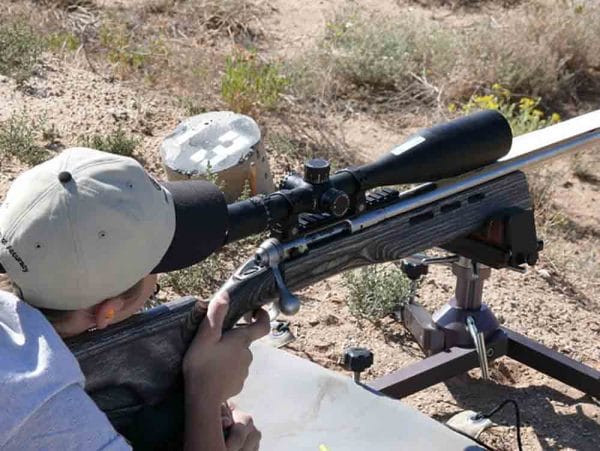
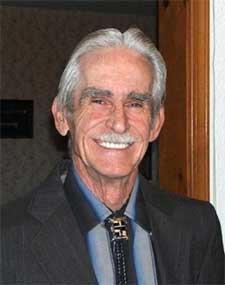
U.S.A. –-(Ammoland.com)- In this article, we will assume that you already have some experience and equipment for reloading metallic cartridges. If not, you can purchase one of several commercial packages with a reloading manual for around $350.
Most hunters start reloading to save money, but wind up reloading primarily to develop accurate loads for their favorite rifles.
However, reloading for long range shooting, bench rest or F-Class shooting is a different story. We don’t know any world-class centerfire rifle shooters who use factory loaded ammunition. The commercial stuff is fine for regular hunting distances, but when you stretch it out to 500 yards or more, it fails miserably. Hence, it is necessary to reload for accuracy.
Before we list the reloading equipment that you need, hang on to your wallet and sit down. The costs are sure to give you heartburn. However, once you have taken the initial plunge on equipment, it doesn’t cost appreciably more to load match-grade ammo than your favorite deer or elk loads. And, if you use the same techniques and equipment for reloading your hunting stuff, you will be amazed at the newfound accuracy of your favorite rifle.
Reloading for Long Range Shooting
The additional equipment for reloading match-grade ammunition has as much to do with the rifle as the ammunition. The chamber tolerances of competition rifles are very precise for maximum performance. Most factory rifles are manufactured with somewhat less precision due to the necessities of mass production. As such, they easily accommodate the variations in factory ammunition. While it is true that factory ammunition meets the minimum specifications of each caliber, the +/- tolerances vary from company to company, as well as from lot to lot.
Such variances, while satisfactory for hunting rifles, are not acceptable in a competition or long range hunting gun.
Most competition shooters re-load one cartridge at a time and have no need for multi-stage turret presses. As such, if you have a good single stage press you are in business when reloading for long range shooting. If not, we would suggest the Redding Big Boss II to handle some of the newer match dies with 1 ¼” threads. The Boss II is supplied with a steel bushing for use with standard 7/8” dies. The bushing can be removed to handle 1¼” dies.
The number of tools that you will need for brass preparation depends upon the brand you select. If you decide to use Lapua or Norma brass, you won’t need buy a concentricity tool or flash hole reamer. But, if you use Winchester, Federal, R-P or Hornady brass, you would be well advised to purchase those tools to “true up” your brass before loading. The reason is that their cases are softer, with thinner walls. Softer brass “flows” more readily during firing and needs to be brought back to specs prior to reloading (Lapua and Norma brass also flow, but to a lesser extent). If a hunter reloads softer brass without “truing” the neck and flash hole, accuracy will be in the neighborhood of 1” at 100 yards. That’s quite acceptable for most big game hunting, but not good enough for long range hunting or competition shooting.
One thousand yards is a long, long way out there.

Before everyone gets on my case about brass, we know an NRA Master shooter who uses .308 R-P brass because he can squeeze an extra couple of grains of powder into the case due to it’s thinner wall. But, he has to turn and trim the necks after every firing, check them with a concentricity gauge (throwing out a fair number of cases), ream out the flash hole and debur the flash hole inside the case before reloading. That’s a lot of extra work for a slight gain in powder capacity. As of this writing, his loads have not been more accurate than folks using Lapua or Norma brass.
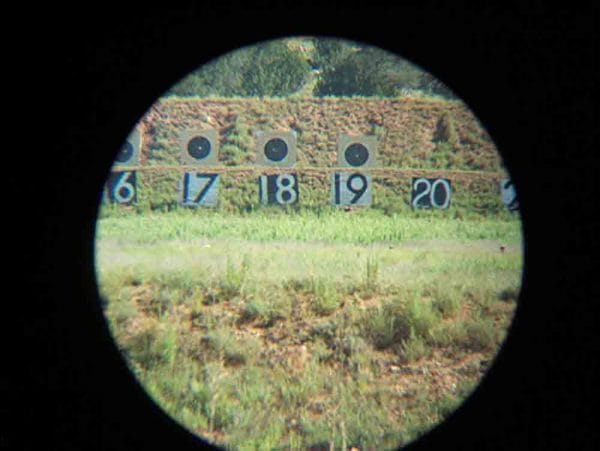
You get what you pay for. Lapua is considered the “standard” for brass quality, and Norma is superb if you aren’t worried about cost. Susannah and Mary use Lapua brass because we don’t want to spend the additional time on case preparation required with inexpensive brass.

Many reloaders use the primer attachment on their press for seating their primers. That is great for hunting, but problematic for competition. Match primers need to be seated snugly against the bottom of the pocket, but not compressed. This is difficult to do consistently with a press. Most competition reloaders use a hand priming tool. These vary in price from the $14.95 for the Lee Auto Prime to $33.60 for the Hornady Handheld Priming Tool and finally $119.99 for the Sinclair Priming Tool. We do not recommend the Lee tools as they are not manufactured to hold up under extensive use. We prefer the Hornady or Sinclair tools. They will all do what is required after you develop the “feel” for them. Jim bought the Sinclair tool due to it’s stainless steel and aircraft aluminum construction. You can’t break it and it’ll last a lifetime.
After carefully priming each new case with the hand tool, you are ready for the powder.
You can use just about any powder measure. They range from $30 up to $300, depending on their accuracy. Jim actually uses an vintage Pacific volumetric measure that cost $15 when it was new. Why not a more expensive one? He weighs every load, even when using his friend’s Harrell Classic Culver measure. Ok, he’s picky. But, he wants every load to be within +/- 0.05 of a grain. Because each charge is weighed, there is no reason to spend money on a more accurate powder measure.
With that being said: If you don’t want to weigh every charge, then buy the most accurate measure you can afford. The Harrell powder measures are very accurate and range in price from $200 to $350. However, the most convenient device around is the RCBS Chargemaster Powder Dispenser/Scale Combo at $350. It dispenses your powder and simultaneously weighs the charge.

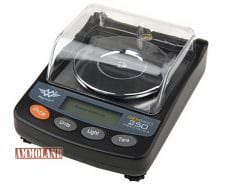
When reloading for long range shooting, buy a good digital scale if you are going to weigh each charge. We realize that a lot of folks swear by the balance scales, but they have some issues which can affect their accuracy. When shopping for a digital scale, DO NOT buy an Asian knockoff. There are a lot of them around (internet auction sites abound with them). These cheap copies are inaccurate, break easily and carry no warranty. Buy your scale from a reputable dealer. Don’t go cheap, as your rifle (and life) depends on an accurate load. Among the best scales are RCBS, Dillon and Sinclair, with prices ranging from $200 to over $300. We have used a My Weigh DuraScale for several years with no complaints. However, the GemPro-250 from Sinclair is hard to beat for accuracy. This scale weighs your loads to within 0.02 grain. It costs $150, but is well worth the price if you are going to do a lot of reloading.
Your choice of bullets depends on the caliber of rifle and barrel twist that you are using. For example, in 6.5mm x 284 Norma, the 142 grain Sierra HPBT (MK) or 139 grain Lapua Scenars are most commonly used (1 in 8 twist), while in the 6mmBR, the 105 grain Berger VLD or 107 grain Sierra HPBT (MK) are preferred (1 in 8 or faster twist).
When reloading for long range shooting the choice of bullets for the .308 Win and .300 WSM is the subject of an ongoing debate among competition shooters. That also applies to seating depth, and whether you are going to “jam” your bullet into the lands or “jump” it. Our suggestion is to seek out an experienced F-Class or Bench Rest shooter and get their advice for the rifle and twist that you are using.
Now comes the fun part. You have fired your new brass once and are ready to prepare it for reloading.
Please read through these reloading steps for long range shooting, several times, before beginning.
Step 1: Place your fired brass into a tumbler for cleaning. Use a mildly abrasive media like ground corn cob. Adding a little brass polish will not only enhance the cleaning, but will extend the life of your media.
Step 2: After removing the cases from the tumbler, make sure that all media is out of the case and clean the inside of the case neck with a neck brush to remove any powder or media residue.
Step 3: De-prime the brass with your de-capping die (or universal decapping tool), making sure that you adequately lubricate the case prior to inserting it into the die. A stuck case can damage your die, not to mention the frustration you experience. However, sooner or later, you are going to get a stuck case. Thus, we recommend buying a Stuck Case Remover if you don’t already have one. These handy tools are inexpensive and well worth the price. Some match die sets combine de-capping and full length sizing into one operation to save time. If you have this type of die set, Step 3 and 5 will be combined.
Step 4: Use a primer pocket uniformer to cut the depth of the primer pocket to the correct SAAMI specs, as well as clean carbon out of the pocket. This step is essential for proper seating of the primer. Use a flash hole deburring tool to clear and clean the flash hole from inside the case. Check the flash hole in the primer pocket to make sure that it is completely clear.
Step 5: Full length resize the case with your match dies. If you can’t afford Alan Warner’s custom dies, which are absolutely the best in the world (they cost about $500), then we would use the Redding Type S Match FL Die Set with titanium nitride coated bushing at $190. Match dies cost more than twice the price of “regular” dies, but they are essential if you want to obtain maximum accuracy in your reloads. Again, make sure the cases are properly (but not excessively) lubricated before using the FL die to avoid sticking.
Step 6: Measure the diameter of the case neck with a micrometer and turn it down to original tolerances with a neck turning tool (if needed). Here again, it may not be necessary with Lapua or Norma brass, but will definitely be needed with the other brands. There are several good neck turning tools on the market, ranging in price from $80 to $110 dollars. Sinclair and K&M turners are among the best.
Step 7: Measure the case length with a set of calipers and trim to specification. Just about any regular case trimmer will work. Here again, you have a variety of choices from Redding, Lyman, RCBS, Holland’s, Forster, Wilson and Sinclair. Prices also vary, from $50 to $150. We use Jim’s original Forster with new pilots for our 6mmBR and 6.5mm x 284 Norma.
Step 8: Deburr the case mouth and slightly chamfer the inside to more easily accept VLD or boat tail bullets. Most reloaders have an inexpensive deburring tool @ $20, but the chamfer tool will cost you an extra $25.
Step 9: Prime your prepared case, using the hand priming tool. Be careful not to compress the primer, but make sure that it is seated level in the bottom of the pocket.
Step 10: Select your powder, pick your load and charge the cases as outlined earlier.
Step 11: Select the correct bullet for your caliber and seat it to the desired depth, using a match grade seating die, like the Redding Competition Seating Die @ $125 – $175, depending on caliber. For details about bullet seating, refer to your manual and/or seek the advice of a known expert.
Step 12: Go out to the range and practice, practice, practice–then come home for more reloading! And yes, the order of some of the steps for reloading for long range shooting can be changed. I simply laid out how we do it, because it works for us.
For the purposes of this article, we have assumed that you already have the tools found on most reloaders bench, such as powder funnels, powder trickler, case neck brushes, case lub pad, case lubricant loading blocks, case tumbler, etc. If you are just starting out, they can be ordered online along with the other reloading tools.
Those of you considering reloading for long range shooting are ready to go back to the beginning of the article with a calculator and start adding things up. To save you a bit of time and trouble, we have included the following reloading equipment list. The prices are estimates (subject to change over time), some tools will be higher and others will be lower, but the bottom line is that you are looking at almost a thousand dollars to get set up properly for reloading for long range shooting. Once these tools are on your bench, you have the satisfaction of knowing that everything is a one-time purchase. From now on, all you have to buy are primers, power, bullets and new cases (after 3-4 firings), pretty much the same as you would for your “regular” ammunition.
Supplemental Reloading Equipment for Accurate Long Range shooting:
- Redding Type S Match FL Die Set (your caliber of choice*) $190
- Redding Competition Seating Die (your caliber of choice*) $175
- Redding Small Base Die (your caliber of choice*) $ 70
- Sinclair Priming Tool w Lee Shell Holder $120
- Sinclair 8000 Series Rifle Kit (primer pocket uniformer) $ 45
- Sinclair Flash Hole Deburring Tool $ 21
- VLD Case Mouth Deburring Tool (for chamfering) $ 25
- Neck Turning Tool with mandrel & pilot $104
- Long Tapered Case Mouth Reamer $ 24
- Digital scale (RCBS) – instead of a balance $150
- Standard 1” Micrometer (Mitutoyo) $ 72 6”
- Dial Caliper (instead of fixed case length gauge) $ 30
Total = $1,026
Additional Tools If You Are Not Using Match brass:
- Flash Hole Reamer $ 30
- Concentricity Gauge $ 150
Total = $ 180
Some Final Notes: We guarantee that you will produce more reliable and accurate hunting ammunition if you use these tools and techniques out lined above for reloading for long range shooting, for all your reloading. Please remember, when picking a load for any given bullet/powder combination, start at 10% less (or lower) than the maximum recommended in your manual and slowly work your way up to the ideal charge for your rifle.
Every rifle has a favorite long range load, so never assume that another shooter’s accurate load will also be the best for your rifle. Be patient and work up the optimal load for your gun. Your time and effort reloading for long range shooting will be well spent. Your reward will be high scores at the range and clean harvests of trophy game in the field.
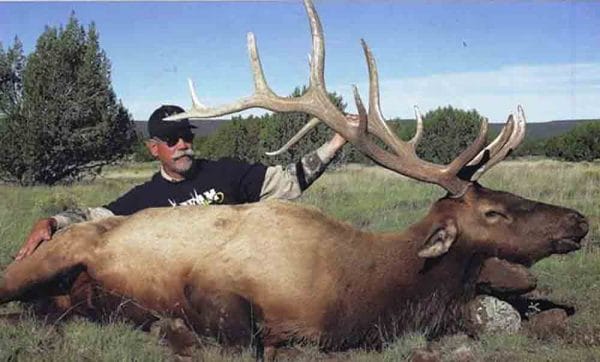
with a 7mm WSM reload per the preceding instructions for Reloading for Long Range Shooting.
Editorial Note: Mary and Susannah Clary are the long range shooters (F-Class) in the family. Jim is their “freeloader” who tweeks the loads to get the maximum performance out of each gun. Mary shoots a customized Remington 700 in 6mmBR Remington caliber with a K-P bull barrel and McMillan stock. Susannah shoots a Savage Model 12F in 6.5mm x 284 Norma caliber with a Bartlein barrel. Both guns are topped with Nightforce NXS 12-42×56 scopes with WTC (Warner Tool Co) 20 MOA rails and Lightforce 30 mm 1.125″ rings.
About Jim and Mary Clary:
Jim and Mary Clary have co-authored over three hundred and fifty articles, (and counting) on shooting and hunting. You can read many of them on AmmoLand News.

I have been using a Lee Collet neck sizing die for my Savage “bolt” gun in lieu of FL sizing. With the collet sizing I check for run out on the necks and so far found them to be less than .001. I can also adjust my amt of pull on the bullet release I know i have to check for headspace about every 3 firings to make sure shoulder doesnt need bumping.. Your thoughts on this.
It is my understanding that brass that is not concentric can not be corrected as it is a problem with variances in the thickness of the case from neck to case head on that side of the case . If this is true it would seem to me that the only solution is not to reload those cases as they will be out of round can not be corrected by any means. This is not my opinion but is taken from Reddings Reloading web sight.
While these people write-off Lee, ( and i do agree about the hand primer tool being crap), most lee products are more than satisfactory for re loaders, I have been using a Lee Challenger press and Perfect Powder measure since the 1980’s, also the Lee beam scale, but I must say it is not good for precise powder weighing.
@Vicount, Sadly, I don’t have a 7mm-08. Here is what I do: first, I look in the reloading manual for similar data. You can tell a lot just from that. For instance, I am currently comparing my 6.5×55 Swede with my 6.5×47 Lapua. Find recipes for same caliber, same bullet weight, same bullet shape, and same kind of powder, then I experiment with same amounts of powder. For the Swede and the Lapua the primer, internal case capacity, and case shape will always be different, but the caliber, bullet weight, bullet shape, kind of powder, and amount of powder will… Read more »
there are a number of variables that could affect the different performances of the 2 6.5 guns, case volume, bullet setback, and the depth of rifling, just to name a few.
@Tony York, I measure the chambers and try to minimize the distance to the rifling. As to case volume, I put the same kind and amount of powder, then fill up the cartridge with corn starch. Tell me more!
I have ongoing experiments the goals of which are: 1. the perfect cartridge, 2. the most accurate perfect cartridge, and 3. a low recoil perfect cartridge. All in my current favorite… the 6.5 x 55 Swedish.
Wild Bill, how does 6.5 x 55 Swede compare to 7mm-08 Rem for you? Just curious.
The Clarys always have interesting articles. As a new reloader, myself, I would also be interested in a list of safety procedures. For instance, I like to weigh each component so that I know, within a grain or two, what the finished cartridge should weigh. When I use a single stage press, I like to use a flashlight to inspect the tray of primed cases to see if they all have powder, before I seat the bullet.